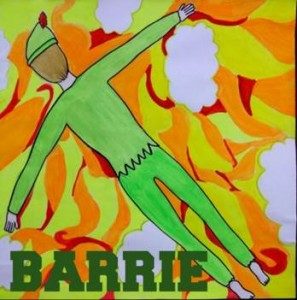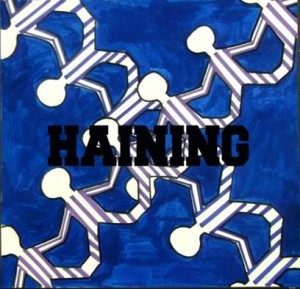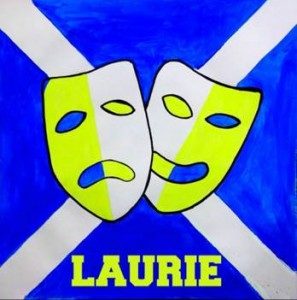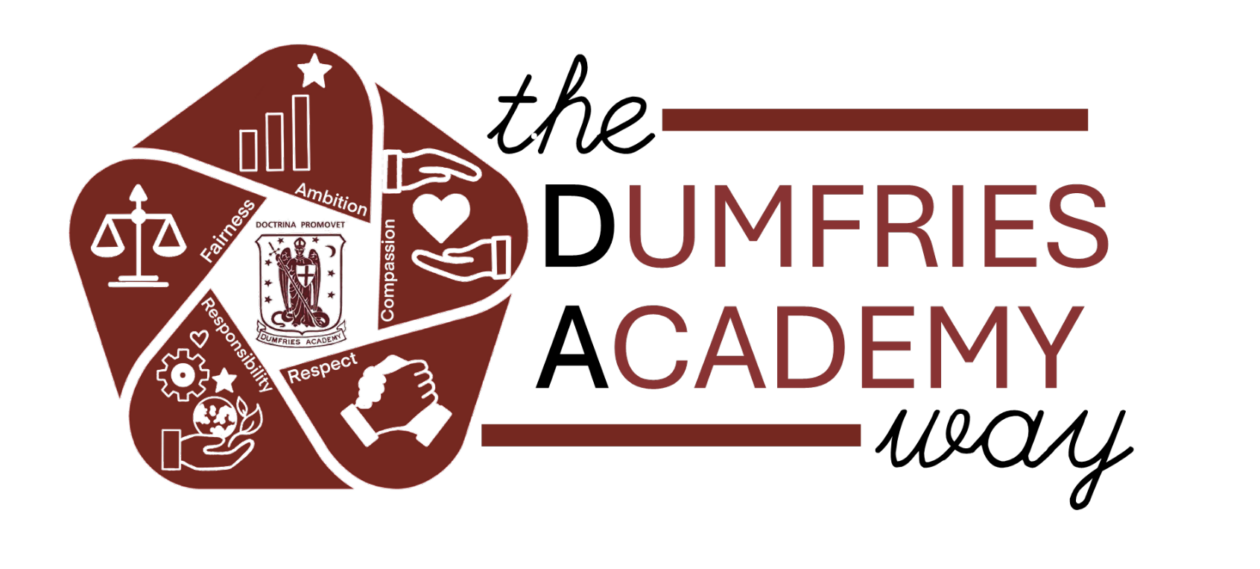The House System at Dumfries Academy was re-launched in 2012 and three new Houses created: Barrie, Haining and Laurie.
Barrie

Sir James Matthew Barrie is probably the most famous graduate of Dumfries Academy. He attended school here for 5 years between 1873 and 1878. He was 13 when he started, and left when he was 18. J.M. Barrie later said that his time at Dumfries Academy was the ‘happiest of his life’.
His first friend at the Academy was a boy called Stuart Gordon. His father, James Gordon, owned Moat Brae House. Barrie, along with Stuart and Stuart’s brother Hal, used to play pirates in the gardens of Moat Brae. This was where Barrie’s imagination was ignited. Barrie began to write stories. His first ever published story appeared in Dumfries Academy’s school magazine. It was called ‘Recollections of a School Master’.
With the ambition to become a writer, Barrie left Dumfries Academy at the age of 18 to study English Literature at Edinburgh University. His play, ‘Peter Pan’, opened in London in 1904. The novel followed in 1911. By this time, Barrie was a famous writer.
Of course, being a famous former pupil makes Barrie a good choice for one of our House names. Fame isn’t everything, though. Barrie also represents some of our school’s values. He wasn’t the best student in the school, academically. He received awards, but never a 1st place. But he was ambitious. He knew he wanted to be a writer, so he helped form the school’s magazine, where his 1st story appeared. He also helped launch the Drama Club, where he was able to stage his 1st play at the age of 15. The reviews for this play weren’t favourable, but Barrie wasn’t put off – he simply tried harder. His ambition took him to university in Edinburgh and, eventually, to a world famous story in Peter Pan.
It isn’t just Barrie’s ambition that makes him an important choice though. He was also compassionate. His success as a writer meant he was able to donate to a number of different causes. In this way, he helped look after other people.
Haining
Jane Haining is one of our school’s heroes. She was born at Lochenhead Farm in Dunscore, eight miles north west of Dumfries. In 1909, she won a scholarship to Dumfries Academy and went on to college in Glasgow. However, it isn’t for her career as a secretary that she is famous.
Jane Haining was from a religious background, and while attending church near her home in Pollockshields, she heard a talk about missionary work in eastern Europe. Jane decided to volunteer there and then.
In 1932, Jane became the matron of the girls’ home at the Jewish Mission School in Budapest, Hungary. Jane was on holiday in the UK when WW2 was declared, and travelled straight back to Budapest to be with her students. She was ordered to return to the UK in 1940 but refused.
When the Nazis invaded in 1944, Jane was arrested by the Gestapo for working amongst Jews. She was sent to Auschwitz in 1944 and died there later that year.
Jane Haining was and is a hero. The way she lived her life is inspirational and her sense of responsibility, compassion and fairness are all values that Dumfries Academy hopes to nurture. Jane Haining could have left Budapest in 1940 when she was told to, but she didn’t. She felt responsible for the Jewish girls in her care and didn’t want to leave them behind. Her act of compassion ultimately led to her death, but the memory of her life is still celebrated today. Her name stands alongside that of J.M. Barrie and John Laurie on the plaque outside the school.

Laurie

John Paton Laurie was born in Dumfries on the 25th March 1897 and died aged 83 on the 23rd June 1980. He was educated at Dumfries Academy and would have gone on to a career in architecture had he not volunteered for service in WW1.
After the war, Laurie trained to become an actor at the Central School of Speech and Drama in London and first stepped on stage in 1921 at the age of 24. Between 1922 and 1939, Laurie spent much of his time playing Shakespearian parts including Hamlet, Richard III and Macbeth at the Old Vic or Stratford-upon-Avon. He also starred in film adaptations of Shakespeare’s plays and made a notable appearance in Alfred Hitchcock’s 1935 film The 39 Steps. John Laurie served in the Home Guard in WW2. He made 10 more films after the war.
The role he is most famous for, however, is that of Private James Frazer in the TV series Dad’s Army. He is best known for the line ‘We’re all doomed!’ It had 18 million viewers in the 1970s and is still shown on TV today.
John Laurie represents some of our school’s core values – ambition and responsibility. Laurie had a sense of responsibility to his country and fought in both WW1 and WW2. He was the only cast member in Dad’s Army to have done so. He was also ambitious and followed his dreams of becoming an actor, despite the two World Wars getting in the way! Loved by millions of fans, John Laurie is a good role model and, as a former pupil, reminds us that we too can be successful.

